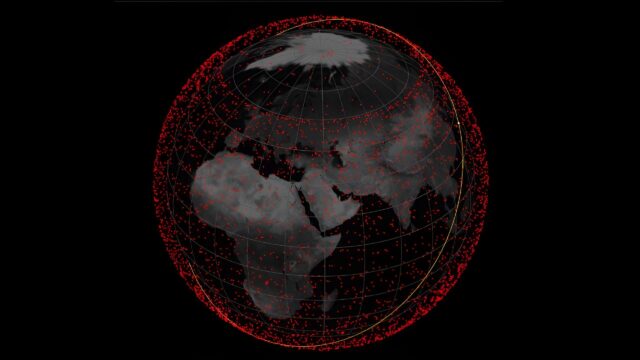The Mars Orbiter is a spacecraft built by the European Space Agency (ESA) that has been flying around Mars for more than two decades. Having recently crossed more than 25,000 orbits, this spacecraft captured an extremely detailed image of volcanoes on the Red Planet.
Magnificent volcano view and surprising discovery from Mars Orbiter
As the ESA writes, “the spectacular view shows volcanoes, valleys, craters, clouds and even Mars’ largest moon, Phobos.”
Here’s what you see in the outer space landscape:
– Olympus Mons: The largest bulge in the lower left is Olympus Mons, the largest volcano in the solar system. This volcano, which is approximately the same size as Arizona, reaches a height of 25 kilometers. (Mount Everest is 5.5 miles high.)
– Volcanic trio: To the right of Olympus Mons are three similarly massive volcanoes named Ascraeus Mons, Pavonis Mons and Arsia Mons. These are shield volcanoes that do not tend to be explosive. Instead, lava flows through eruptions, building layers over time and creating a gentle slope. As a result, they form a landform that resembles a shield placed on its back.
– Numerous craters: Mars is completely covered with craters. The Red Planet is close to the solar system’s asteroid belt, a region filled with millions of asteroids. When they hit Mars, these space rocks are less likely to heat up and break apart, as the Martian atmosphere is only 1% as dense as Earth’s atmosphere. Moreover, Mars is not completely geologically dead – marsquakes occur frequently there – but there is not enough geological activity and volcanism to wash out or cover new craters (like on Earth).
– Martian clouds: You can see large cloud covers at the top and bottom of the image, above and below both poles. On Mars, clouds consist of water ice and carbon dioxide ice.
– Moon Phobos: You can see Mars’ dark, misshapen moon, Phobos, floating above the Red Planet. Relatively small and not very heavy, it is only 27 kilometers long at its longest side. “It is not heavy enough for Phobos to be spherical,” explains the European Space Agency. Moreover, it has been repeatedly hit by powerful space rocks. “Phobos was nearly shattered by a giant impact and is pockmarked by thousands of meteor impacts,” NASA noted.
This impressive Martian landscape illuminates our journey to explore the Red Planet’s unique geography and the mysteries deep within our universe.

